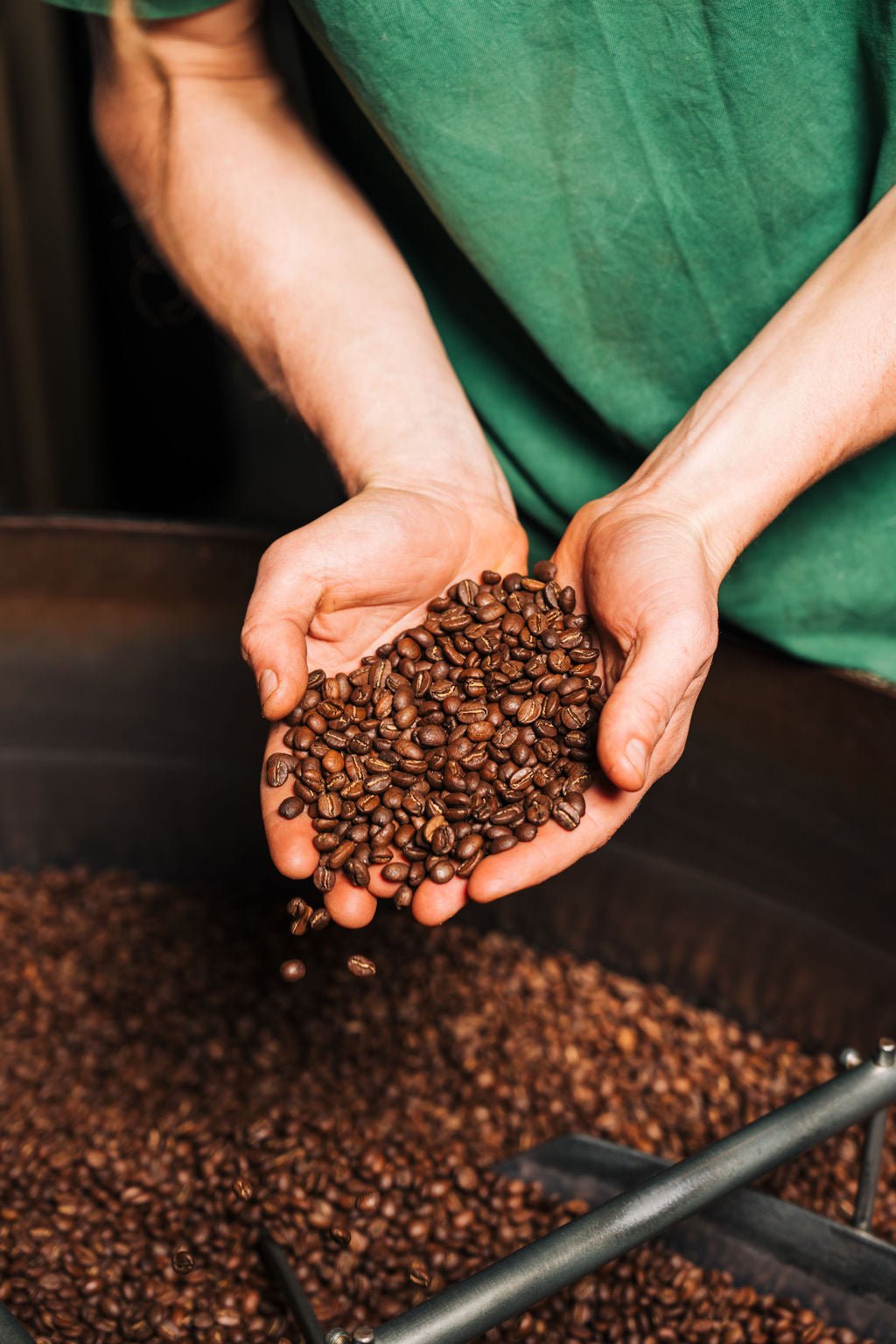The Science of Coffee Roasting: An In-depth Look
Coffee roasting is more than simply hurling some beans into a roaster. It's a complex interplay of heat, time and knowledge of the properties of the coffee bean, which culminate in the unique flavours we associate with our daily brew.
Scientists, food experts, and coffee roasters have spent years studying the process to fully grasp its mechanics and intricacies. However, understanding the basics of coffee roasting begins with the most vital component - the coffee bean.

Understanding the Coffee Bean
Coffee originates from a genus of plants known as Coffea. Within this genus, there are many species, but two have been predominantly cultivated for consumption: Coffea Arabica and Coffea Canephora (also known as Robusta). The coffee plant produces a fruit known as a coffee cherry, and nestled within each cherry are typically two coffee beans. These beans are the seeds of the coffee plant and contain a multitude of complex chemical compounds that contribute to the taste of our cup of coffee.
The quality of the raw coffee bean significantly influences the final outcome of the roasting process. Imperfections in the beans, like mould, insect damage, or poor farming practices, can cause off-flavours in the final cup. Sourcing high-quality coffee beans, like those available at Margaret River Roasting Company is crucial to achieving a well-rounded, flavourful roasted coffee bean.
The Fundamentals of Coffee Roasting
The process of coffee roasting involves applying heat to green coffee beans. When heated, the beans undergo a series of chemical reactions that cause them to change in colour, size, aroma, and flavour. This transformation gives us the familiar brown roasted coffee beans that we grind and brew to make our daily cup of coffee.
Controlled application of heat is essential in the coffee roasting process. Depending on the temperature and the duration of roasting, different flavours can be brought out from the beans. Too much heat or too little heat can either overcook or under-cook the beans, affecting the quality of the brew.
Coffee roasting consists of several stages including the drying stage, the Maillard reaction stage, and the development stage. In the drying stage, the beans lose moisture and start to yellow. The Maillard reaction stage sees sugars and amino acids interact to create complex flavours. The development stage is when the heat is carefully controlled to achieve the desired roast level.
Chemical Reactions During Coffee Roasting
The Maillard reaction, is a reaction between amino acids and reducing sugars that gives browned foods their desirable flavour. This reaction occurs during the roasting process and contributes significantly to the flavour profile of the coffee beans.
Caramelisation is another critical chemical reaction that happens during coffee roasting. As heat breaks down and transforms the sugars within the coffee beans, it creates sweet, nutty, and complex caramel notes that are characteristic of roasted coffee.
Both the Maillard reaction and caramelisation fundamentally affect the flavour of the coffee. They create the complex tastants that make coffee so diverse in flavour. Depending on the roast level, these two reactions will produce different proportions of these tastants, leading to unique taste profiles.
Roast Profiling
Roast profiling is a methodology used by roasters to record and reproduce specific roasting blueprints. By recording variables such as time, temperature, and rate of rise, roasters can create unique flavour profiles that can be consistently replicated.
Adjusting the roasting time and temperature can greatly influence the flavour of the coffee. Shorter roast times at higher temperatures can preserve the inherent characteristics of the beans. Conversely, longer roast times at lower temperatures can create a more balanced and full-bodied cup, extracting more sugars and allowing for greater caramelisation.
Roasters experiment with different profiles to achieve the desired flavour balance.
Roast Levels and Their Characteristics
Light roasts have a light brown colour and no oil on the surface of the beans. They have a toasted grain taste and high acidity. Medium roasts are medium brown with a strong flavour and non-oily surface. Dark roasts are rich, dark colour with some oil on the surface and have a bitter taste.
Visit The Best Coffee Roastery in Margaret River
Witness the fascinating process of coffee roasting at our roastery café. Our café features an array of blends and specialty drinks, with options rotating weekly for a diverse tasting experience.
Here, you can also pick up freshly roasted beans, precisely ground on-site for your perfect brew at home or work.
Join us at our café in Vasse, delve into the art of coffee, and elevate your everyday coffee experience with Margaret River Roasting Co.


